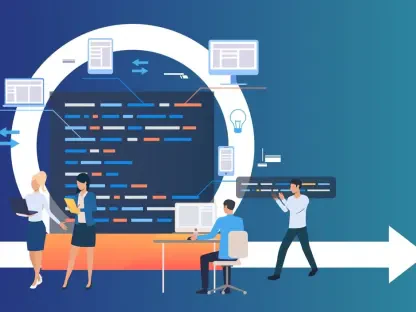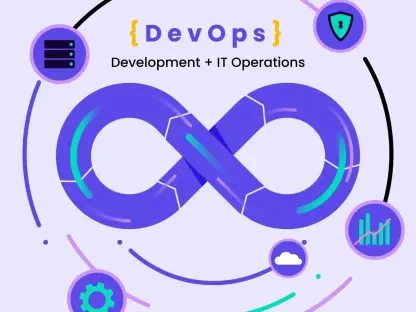Imagine a world where a single AI tool can write complex code, generate polished documents, and automate intricate business processes with just a few prompts, transforming the way we approach productivity. This is the reality brought to life by Anthropic’s latest innovation, an advanced AI model that has captured the attention of developers and enterprises alike. In an era where efficiency and ethical considerations are paramount, this technology promises to redefine productivity while addressing critical safety concerns. This review delves into the capabilities, performance, and broader implications of this cutting-edge tool, offering a detailed look at its place in the rapidly evolving AI landscape.
Key Features and Performance Analysis
Advanced Coding Prowess
The standout feature of this AI model lies in its exceptional coding capabilities, tailored specifically for developers tackling intricate projects. With the ability to execute code, create files, and integrate seamlessly with tools like an upgraded command-line interface and a native extension for Visual Studio Code, it transforms how programming tasks are approached. These integrations allow for real-time code editing and debugging, significantly reducing development time.
Beyond basic functionality, enhancements such as checkpoints for saving progress and a refined terminal interface demonstrate a thoughtful design aimed at streamlining workflows. These tools ensure that developers can pick up where they left off without losing critical context, a feature particularly valuable for long-term projects. The impact is clear: complex coding challenges become more manageable, fostering innovation in software development.
Document Creation and Seamless Workflow
For general users and professionals outside the coding sphere, the model offers robust in-chat document creation features that simplify content generation. The ability to produce tables, presentations, and other formatted documents directly within the web interface eliminates the need to juggle multiple applications. This integration is a game-changer for those in business or creative roles who prioritize efficiency.
The practical benefits extend to everyday tasks, such as drafting reports or preparing client-facing materials without switching platforms. By centralizing these functions, the technology boosts productivity and reduces friction in professional workflows. Enterprises, in particular, stand to gain from streamlined processes that save time and resources, making this feature a cornerstone of its appeal.
API Upgrades and Memory Tools
On the technical front, updates to the API provide developers with powerful tools to handle sustained, complex tasks. Context-editing capabilities and memory tools ensure that the AI retains critical information over extended interactions, a vital asset for projects requiring continuity. This functionality caters to applications that demand high precision and consistency.
Such enhancements enable the creation of sophisticated agent-based systems, where the AI can manage long-running processes without losing track of objectives. For industries relying on automation and intricate data handling, these API improvements offer a competitive edge. The focus on efficiency and adaptability underscores the model’s suitability for cutting-edge development needs.
Industry Context and Ethical Considerations
Within the broader AI landscape, the rise of chatbots as universal assistants signals a shift toward multifunctional tools that cater to diverse needs. Benchmarks remain a key metric for evaluating progress, though they often fall short of capturing intangible qualities like user trust or ethical impact. This model emerges in a climate where balancing utility with responsibility is a growing priority for tech companies.
Anthropic’s approach to development emphasizes caution, with deliberate efforts to minimize risks such as manipulation or deceptive outputs. This focus aligns with an industry-wide recognition of the need for safe AI systems, especially as applications expand into sensitive domains. By prioritizing ethical guidelines, the company sets a standard for how innovation can coexist with accountability in this space.
Real-World Impact and Applications
Across various sectors, this AI model demonstrates remarkable versatility, addressing needs ranging from coding automation to enterprise-level process management. Developers leverage its advanced tools to accelerate software creation, while businesses utilize document generation for operational efficiency. The breadth of its applications highlights a design that caters to a wide audience.
A notable demonstration of its potential came through a limited research preview for select users, showcasing real-time program creation capabilities. This glimpse into interactive, dynamic use cases suggests exciting possibilities for integrating the technology with robust infrastructures. Such initiatives reveal how the model can adapt to unique challenges, paving the way for innovative solutions in unexpected areas.
Challenges and Areas for Improvement
Despite its strengths, measuring the full scope of the model’s performance remains a challenge, as standard benchmarks often overlook nuanced aspects like user experience or ethical implications. This limitation raises questions about how to assess AI tools comprehensively in a field that evolves rapidly. Addressing these gaps is essential for a holistic understanding of impact.
Ethical concerns also loom large, particularly regarding potential misuse in high-stakes environments. While Anthropic actively works to mitigate such risks, the complexity of human-AI interactions necessitates ongoing vigilance. Continuous improvements in safety protocols will be crucial as adoption grows, ensuring that the technology remains a force for positive change.
Future Trajectory and Potential
Looking ahead, the roadmap for this AI model likely includes further refinements and feature expansions to meet emerging user demands. Over the next few years, from 2025 onward, updates could focus on enhancing personalization and deepening integration with specialized tools. Such advancements would solidify its position as a leader in the AI domain.
The long-term implications for industries like software development, content creation, and business automation are profound. As ethical AI practices gain traction, this technology could play a pivotal role in shaping societal acceptance of such systems. Its evolution will likely serve as a benchmark for how innovation and responsibility can intersect in meaningful ways.
Final Thoughts and Next Steps
Reflecting on this evaluation, the AI model delivered impressive capabilities that stood out in coding, document creation, and API functionality. Its performance set a high bar for versatility, while Anthropic’s commitment to safety added a layer of trust that was critical in a competitive field. The real-world applications showcased during limited previews hinted at untapped potential that deserved further exploration.
Moving forward, stakeholders should prioritize integrating this technology into workflows while advocating for robust ethical frameworks to guide its use. Developers and businesses alike would benefit from collaborating with Anthropic to tailor solutions for specific challenges, ensuring maximum impact. Additionally, investing in research to measure intangible performance aspects could provide deeper insights, driving the next wave of AI advancements with precision and care.









